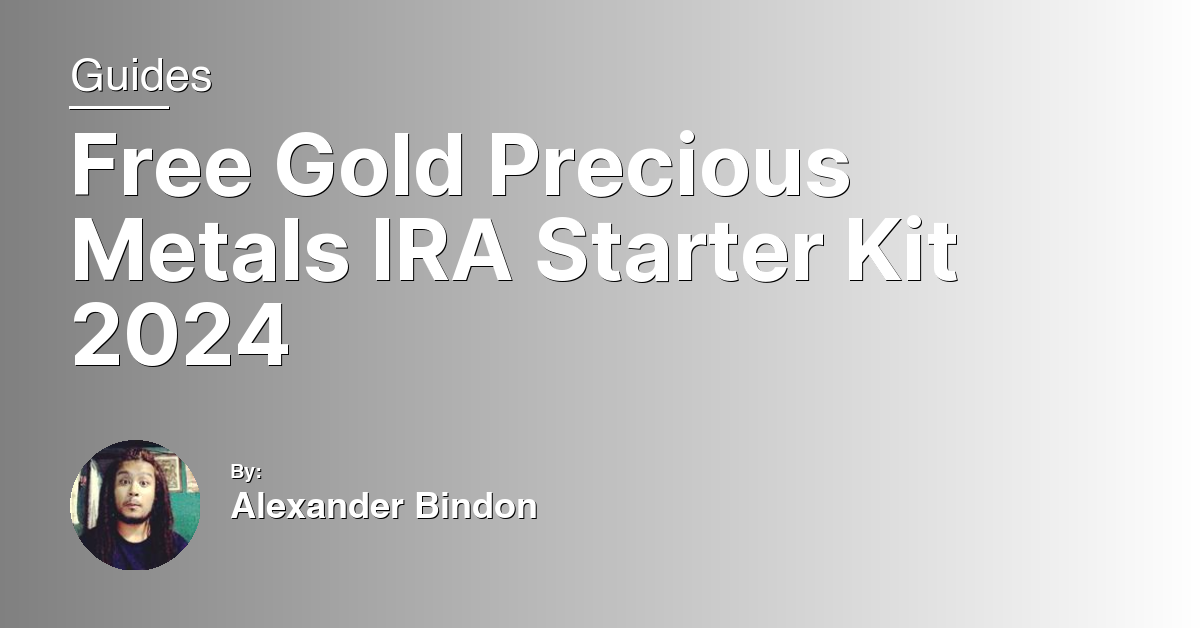In an ever-evolving financial landscape, securing your retirement savings in a stable and reliable asset becomes paramount. Gold, with its enduring value, presents a compelling option. This guide offers a seamless roadmap for transferring your 401K into a gold IRA without incurring penalties, ensuring your golden years shine just as brightly as this timeless metal. Let’s embark on a journey to safeguard your future by diversifying your retirement portfolio.
Understanding Gold IRAs
Investing in a Gold IRA can serve as a hedge against inflation and currency depreciation, safeguarding your retirement savings against the volatility of the market. Precious metals have historically maintained their value over time, unlike paper assets that can be susceptible to market swings and inflation.
A rollover from a 401(k) to a Gold IRA allows you to move your retirement funds without incurring income tax penalties, providing a tax-advantaged way to secure and grow your retirement savings.
The Basics of a 401(k) to Gold Rollover
A 401(k) to Gold Rollover involves transferring your retirement savings from a traditional 401(k) plan into a gold IRA, which is an Individual Retirement Account that holds physical gold or other approved precious metals as assets. This process allows you to diversify your investment portfolio beyond traditional stocks, bonds, and mutual funds, potentially offering a hedge against inflation and currency depreciation.
To initiate a rollover, you must first ensure that your current 401(k) plan allows for such transfers. Next, choose a reputable custodian experienced in gold IRAs to facilitate the process. It’s crucial to conduct due diligence, considering fees, security, and customer service.
The transfer can be direct or indirect. A direct rollover is straightforward and involves the transfer of funds from your 401(k) to the gold IRA without you touching the money, thus avoiding any income taxes or penalties. An indirect rollover requires you to withdraw funds and then deposit them into the gold IRA within 60 days, which carries the risk of taxes and penalties if not completed on time.
This move can offer a robust diversification strategy, especially during times of financial uncertainty or high market volatility, as seen during the 2007–2008 financial crisis. Gold and other precious metals like silver, palladium, and platinum have historically maintained their value over the long term, serving as a reliable store of wealth and a hedge against the risk of depreciation in paper assets.
Direct vs. Indirect Rollovers: What’s the Difference?
When opting to roll over your Gold 401K to an IRA, understanding the difference between direct and indirect rollovers is crucial for a penalty-free transition. A direct rollover involves the transfer of your retirement funds directly from your 401(k) plan to your IRA without the money ever touching your hands. This method is preferred for its simplicity and because it doesn’t trigger any income tax obligations.
On the other hand, an indirect rollover requires the funds to be paid to you first. You then have 60 days to deposit the amount into a new IRA to avoid taxes and penalties. However, 20% of your funds are withheld for income taxes, which you must replace from other sources if you wish to roll over the entire amount.
Choosing a direct rollover is advantageous for maintaining your investment in precious metals like gold, ensuring continuous market liquidity and portfolio diversification without facing immediate tax penalties. Always consult with a financial adviser to navigate the rollover process smoothly, keeping in mind your investment goals and the need for due diligence.
Tax Considerations for Gold IRAs
When rolling over a 401(k) into a Gold IRA, understanding the tax implications is crucial. Traditional 401(k) plans and Gold IRAs both offer tax-advantaged growth, but the specifics vary. With a Gold IRA, you’re investing in physical gold, a tangible asset, which can serve as a hedge against inflation and currency depreciation, enhancing your portfolio’s diversification.
Income taxes on withdrawals from a traditional 401(k) or Gold IRA are due at your current tax rate at the time of withdrawal. However, a direct rollover from a 401(k) to a Gold IRA typically does not trigger an immediate tax liability, allowing the investment to continue growing tax-deferred.
Be mindful of the types of gold investments eligible for a Gold IRA, such as coins or bullion. Not all gold assets are IRA-approved. Consulting with a financial adviser specialized in precious metals can provide clarity on eligible investments and help navigate the complexities of tax regulations, ensuring your rollover process is both efficient and compliant.
Choosing Between Full or Partial Rollovers
When deciding to roll over your Gold 401(k) into an IRA, weighing the option between a full or partial rollover is crucial. A full rollover involves transferring the entire balance of your 401(k) into a new or existing IRA. This can be advantageous for those seeking to consolidate their retirement accounts for easier management and potentially broader diversification. However, it’s important to consider the tax implications, as the income tax in the United States may apply to certain transactions.
A partial rollover, on the other hand, allows you to transfer only a portion of your 401(k) funds into an IRA. This could be beneficial for maintaining some level of diversification within your portfolio, leveraging different financial assets across various accounts. It also offers flexibility in managing market liquidity and hedging against currency appreciation and depreciation.
Regardless of the path chosen, both options can serve as a hedge against inflation and economic downturns, similar to the 2007–2008 financial crisis, by including precious metals like gold, silver, platinum, and palladium in your retirement portfolio. Always consider the fees associated with each option and the potential tax advantages to optimize your retirement wealth.
Selecting the Right Gold for Your IRA
When selecting the right gold for your IRA, particularly in a 401(k) to IRA rollover, it’s crucial to focus on diversification and the hedge benefits gold offers against inflation and currency depreciation. Gold, as a precious metal, stands out as a resilient financial asset that can bolster your retirement portfolio’s security.
Consider the form of gold you’re investing in—coins or bullion are popular choices, each with its own price and fee structure. Ensure that the gold meets the IRS standards for IRA investments. Diversification within your gold investments can further protect against market volatility, making it a strategic component alongside bonds, mutual funds, and other assets in your retirement plan.
Tax advantages play a significant role in maximizing your investment’s potential. Gold IRAs offer similar tax benefits to traditional IRAs, meaning your investment can grow tax-deferred, providing a significant advantage over other investment vehicles. Always consult with a financial advisor to tailor your gold investment choices to your overall financial goals and ensure compliance with IRS regulations.
Navigating IRS Rules for Gold Investments
When rolling over your 401(k) into a gold IRA, ensure that the transaction is a direct rollover to avoid any taxable event and potential penalties. This means the funds are transferred directly from your 401(k) plan to the gold IRA without you taking possession of the money.
Fees are another consideration. While gold offers a tax advantage as a long-term investment, be aware of potential custodian fees and storage costs. These can vary widely, so shop around and compare to keep your investment costs low, ensuring your gold investment enhances your portfolio’s diversification and serves as an effective financial asset for your retirement.
Evaluating Gold IRA Providers and Fees
When evaluating Gold IRA providers, it’s crucial to compare their fees, including setup, annual, and storage costs. These fees can vary widely among providers and can significantly affect your investment’s return. Look for transparent pricing and avoid those with hidden charges.
Customer service quality is another vital factor. A provider with knowledgeable and accessible support can guide you through the rollover process smoothly, helping you avoid common pitfalls that might lead to penalties or unnecessary taxes.
Consider the provider’s technology and ease of access to your account information. A platform that offers real-time tracking of your gold investments and portfolio diversification tools can be invaluable.
Lastly, review the variety of gold (coins, bars) and other precious metals offered. Diversification within your gold IRA can act as a hedge against currency depreciation and market volatility, enhancing your retirement portfolio’s resilience.
Timing Your Investment in Gold
Before initiating the rollover, assess the current economic climate, focusing on currency appreciation or depreciation, as these factors significantly impact gold prices. Moreover, evaluate your existing portfolio’s composition. If it’s heavily invested in stocks, mutual funds, or bonds, adding gold can enhance diversification and reduce risk.
The tax advantage of a rollover, if executed correctly, means no immediate income tax implications, preserving your pension’s value while transitioning to a potentially more secure investment vehicle. Always consult with a financial advisor to ensure the timing aligns with both market conditions and your personal financial goals, avoiding unnecessary fees or penalties.
Strategic Tips for Retirement Savings Through Gold
| Tip | Description |
|---|---|
| 1 | Consider rolling over your 401K into a Gold IRA to protect your retirement savings against economic uncertainty. |
| 2 | Research reputable gold IRA custodians to ensure the safety and security of your investment. |
| 3 | Diversify your retirement portfolio by including gold as a hedge against inflation and market volatility. |
| 4 | Consult with a financial advisor to determine the best strategy for incorporating gold into your retirement savings plan. |
| 5 | Monitor the performance of your gold investments regularly and make adjustments as needed to maximize returns. |

